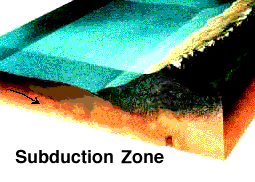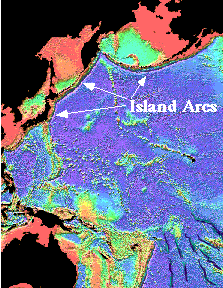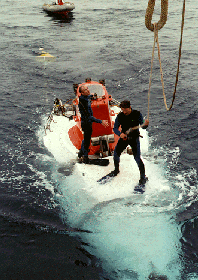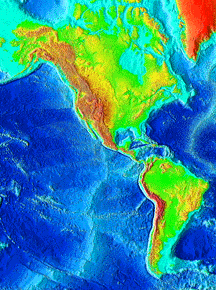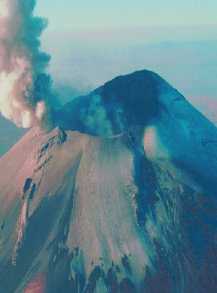Click on image for full size
Image copyright 1997 by the American Geophysical Union. Further electronic distribution is not allowed.
Subduction
When two sections of the Earth's lithosphere collide one slab of lithosphere can be forced back down into the deeper regions of the Earth, as shown in this diagram. This process is called subduction. The slab that is forced back into the Earth usually undergoes re-melting when the edges reach a depth which is hot enough. (Temperatures hot enough to melt lithosphere are of the order of a thousand degrees!). The processes of mountain building or island formation, and lithospheric subduction usually go together, as shown in this picture of the Pacific Ocean floor.
Associated with the subduction of a slab of lithosphere is a trench, which is found at the interface between the slab which is undergoing subduction, and the adjoining slab. The trenches associated with subducting slabs can readily by seen on this diagram of a mid-ocean spreading ridge, and on maps of the ocean floor.
Remelted lithosphere is usually of a different chemical nature than the surrounding lithosphere or aesthenosphere. Remelted lithosphere rises back towards the surface where it frequently contributes to the formation of volcanoes and island arcs. The remelted lithosphere also releases gases of the atmosphere which had become trapped in the ground. Thus subduction of the lithosphere contributes to recycling of the atmosphere.


